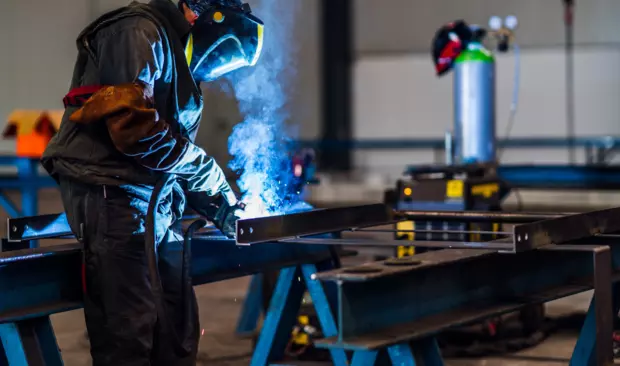Fabrication forward: Navigating industry hurdles with ERP

Whenever raw metal is shaped, welded, machined, or assembled in any way, the metal fabrication industry is hard at work.
This industry is crucial, involved in making everything from basic hardware and structural components to everyday products like hand tools and handrails. This importance is one reason the industry grows steadily by about three percent each year. However, despite this growth, the metal fabrication sector faces its own set of challenges:
- Costs of material
- Supply chain complexities
- Labour shortage
- Customer demand
- Inventory hurdles
The escalating cost of raw materials, the intricate dance of overseas supply chains, and the critical shortage of skilled labour are just the tip of the iceberg. Add to this the increasing customer demands for rapid delivery and heightened customisation, and you have an industry that's actively seeking innovative solutions. The question is, how can fabrication businesses take these challenges head on for 2024?
The peaks of customer demand
Today's market is driven by two dominant customer demands: the need for customisation and the expectation of rapid delivery. This combination of demands places a significant strain on the fabrication process. Customisation, especially, has transformed from a niche request to a standard requirement, compelling manufacturers to offer a wide array of options for customised parts.
Managing labour shortages
The industry is also navigating through the murky waters of labour shortages. This scarcity of skilled labour is not just a matter of numbers; it impacts production efficiency, quality control, and ultimately, customer satisfaction. The challenge is not only to find skilled workers but also to maximise the productivity of the existing workforce.
The rise of raw material costs
As the fabrication industry grapples with rising raw material costs, efficient management of these resources becomes crucial. Economic fluctuations and global supply chain challenges, including the trend towards reshoring, are pushing businesses to optimise material use and reduce waste.
Your new digital ally
If you're new to Enterprise Resource Planning (ERP) software or have been hesitant to embark on your digital journey due to the size of your business, it's time to reconsider. ERP software is no longer a luxury reserved for the big players; it's a necessity for any business seeking to stay competitive and efficient.
How can ERP software help the fabrication industry tackle its biggest challenges:
ERP software can be a transformative tool for your business, addressing the myriad challenges you face:
Cost management: It provides real-time data and analytics, helping you make informed decisions about purchasing materials, potentially saving costs.
Supply chain simplification: ERP systems can streamline your supply chain, making it easier to manage complexities, especially those involving overseas suppliers.
Labour management: These systems can help optimise your workforce, ensuring that you make the most of the labour available, even in times of shortage.
Customisation and delivery: ERP software allows for better tracking and management of custom orders, ensuring that you can meet customer demands for personalisation while maintaining fast delivery times.
Inventory optimisation: By integrating inventory management, ERP systems help you maintain the right balance – taking advantage of lower material prices without the risk of overstocking.
Continuous improvement: With comprehensive data at your fingertips, you can continuously refine processes, machinery choices, and operational strategies.
Making the leap
Implementing an ERP system as a manufacturing business that's unfamiliar with automation might seem daunting, but the benefits far outweigh the initial effort. As you navigate the challenges of metal and plastic fabrication, an ERP system built for manufacturers could be the most significant step you take towards operational excellence.
Remember, adopting new technology is not just about keeping up with the times; it's about staying ahead of the curve. The right solution could be the key to unlocking efficiency, reducing costs, and exceeding customer expectations in an ever-evolving industry.